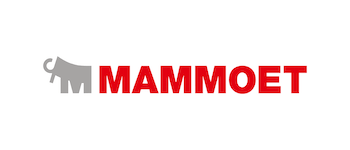Fit to standard?
The fact that Mammoet's business is different from that of other companies was evident, for example, in discussions about the extent to which fit to standard can be applied, according to Mark. "Conclusion was used to developing customized solutions when processes cannot be automated within the standard, but we were very much against it. We continuously and very tenaciously managed to nip in the bud any tendency for customization. Fierce discussions erupted at times, because our business is so different in some areas from how SAP's software is structured. Which is a good thing, as 'a gem cannot be polished without friction"'.
A difficult aspect of developing the global template was the fact that SAP is less suitable for an Agile approach than the other software suites that are part of the solution. Mark explains: "With SAP, you have to design first and then integrate with other applications. In an Agile approach, integration is included from the start. Because we were able to test the realized integrations in the final phase of the project, there was a lot of pressure in that phase of the programme. Of course, such a test always yields results that need to be resolved first. This is manageable if you have a relatively simple operation. But our software contains as much as ninety different business flows. That's 90 happy flows, all of which also have a multitude of 'unhappy' variants. Such as work that has been scheduled but is withdrawn at the last minute."
Those unhappy flows are the ones that require complex interfaces. Now that the first country, Belgium, has gone live, it turns out that the processes designed are still a bit too constricting in certain places. Mark explains: "We now know that in Belgium, more than 95 percent of our processes are covered by the template. A great score, but we want to raise it to 100 percent before we roll out in the other countries as well. This requires additional configurations to be made. But first, we need to establish a basic working method for all non-matching process steps, i.e. the unhappy flows."
Benefiting from Conclusion's expertise
Conclusion's development team has now handed over the programme to the administration team, which acts as a single point of contact for the SAP environments. Mammoet carries out the global roll-out with its own people. Mark reflects positively on the collaboration and is very pleased with choosing Conclusion. "We really benefited from the fact that they have such deep expertise in sub-areas. An unlikely asset to find among other parties. Plus, our corporate cultures match. Because of that, you always manage to connect and find a solution together, even when things get tough."
Phased implementation
Once the final adjustments have been made to the template, the implementation in the Netherlands will begin. Mark stresses that this is a much bigger project than Belgium. "Belgium is a relatively young organization, with only two branches. The Netherlands is home to our headquarters. With 10 branches, it is bigger. But more importantly, it is a lot more complex due to four past acquisitions that remain tangible under the bonnet." The ultimate goal is to have migrated all 100 sites worldwide by mid-2026.
The key lesson is that rigorous adherence to fit to standard works out well. "We will soon have software that completely covers our processes while being easy to maintain. Many of the decisions currently being made by humans will soon be made by software", says Mark. This will make Mammoet more efficient, but above all more effective. Right now, we are still driving by looking in the rear-view mirror. Soon, we will also be able to look ahead. Moreover, when unexpected things happen, we will have a much better understanding of how to act. In short, we will truly be in control of our business."





